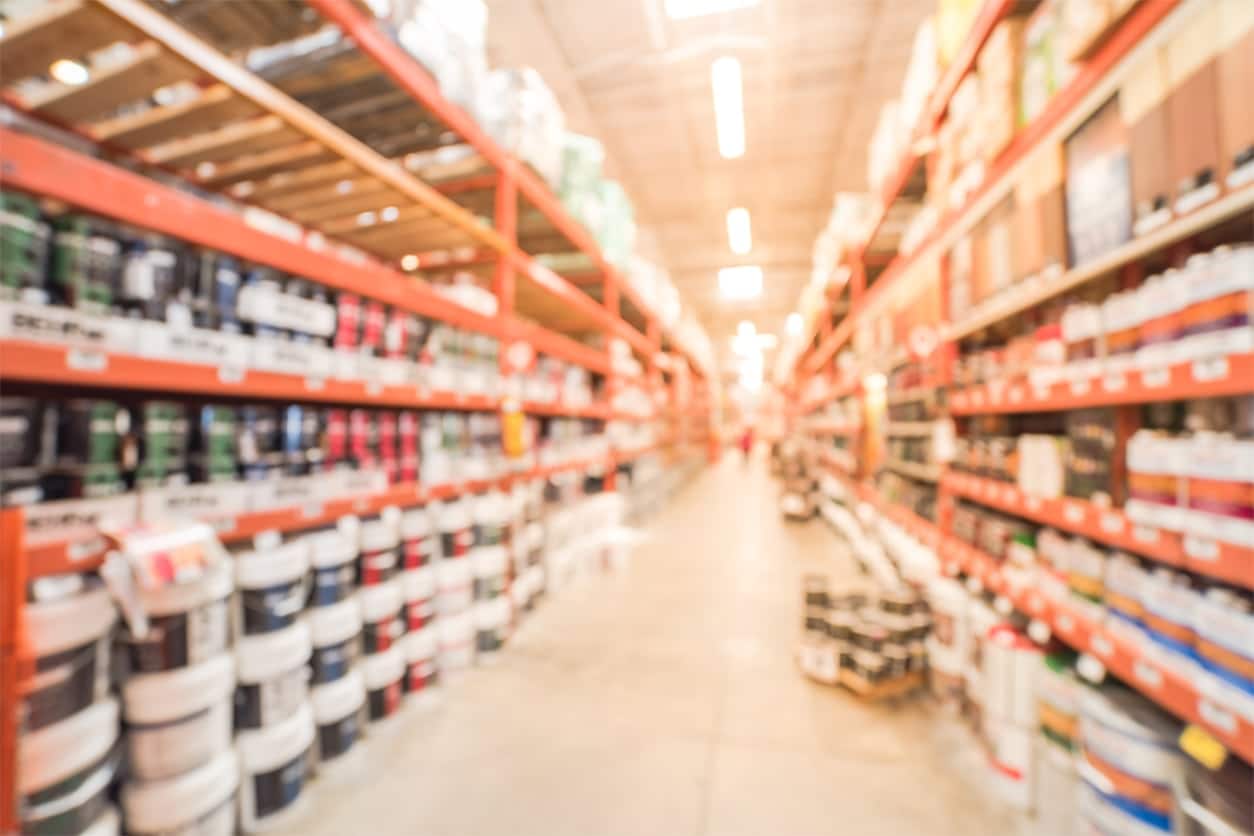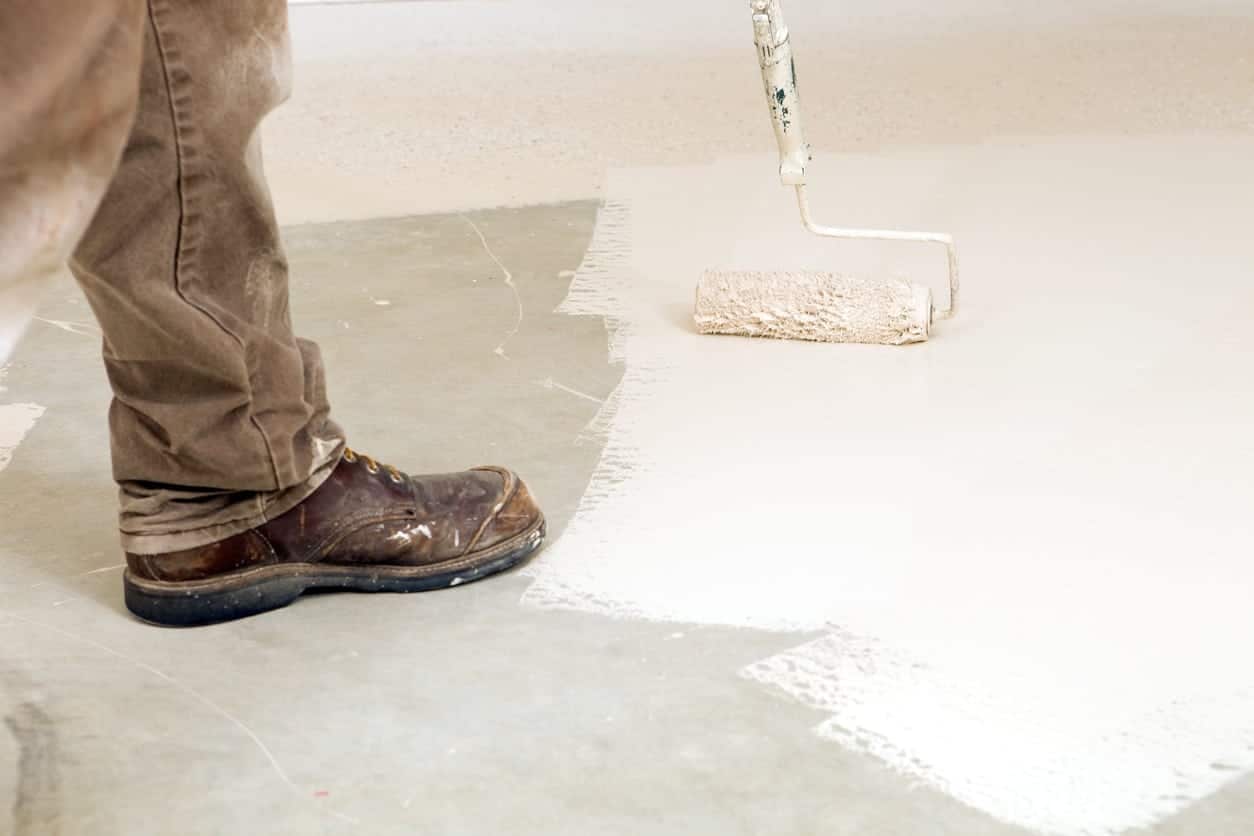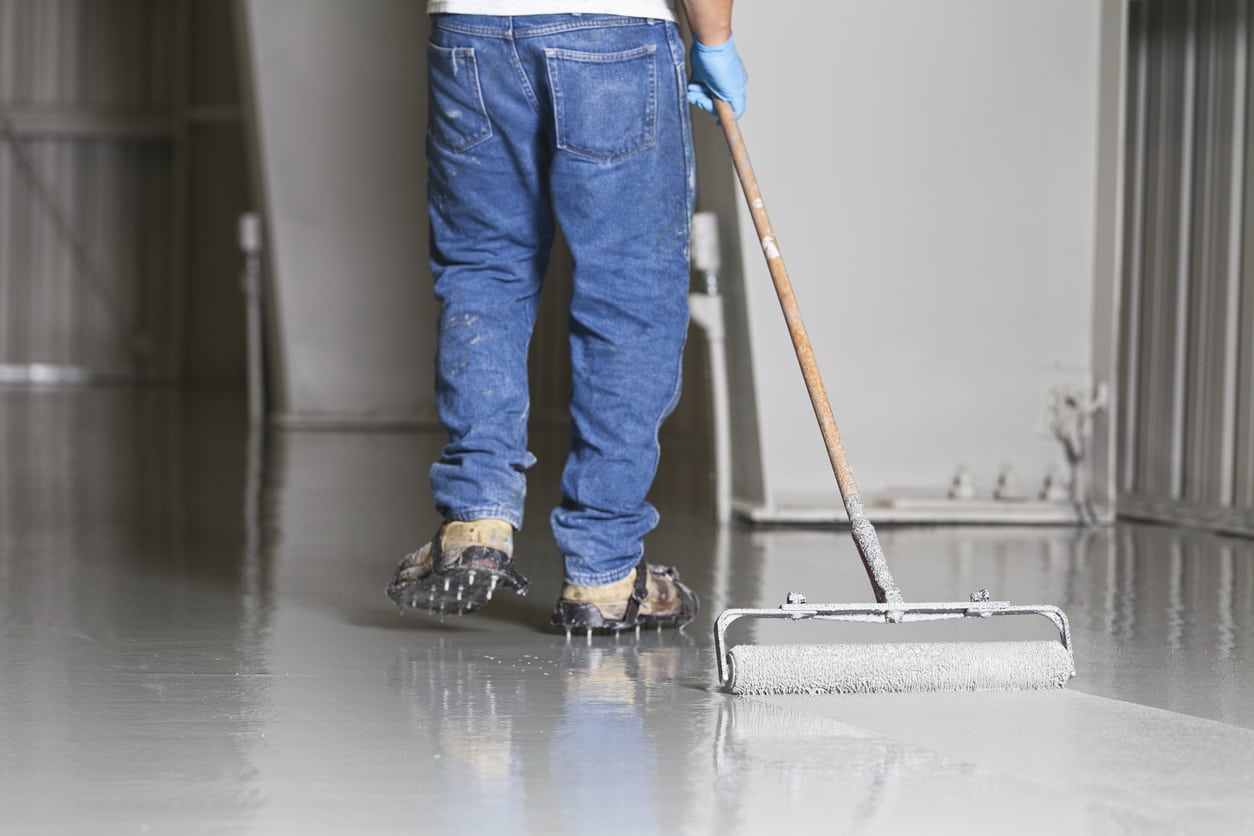In the market of concrete sealers, there are a number of different options available to you. There are offerings such as surface-level sealers, such as acrylic sealers, epoxies, or polyaspartics and urethanes. Then, there are the penetrating variety of sealer, such as silicates, whose carriers can range from sodium to lithium. While it may be confusing to determine the difference between a silicate and a silane/siloxane, for example, the differences are not all that esoteric.
For instance, we shall consider a silicate versus a silane/siloxane. A silicate is a penetrating sealer made up of small particles of sealant. These small silicate particles are suspended in a sodium or lithium carrier that helps transport the particles past the surface pores of the concrete. The water or solvent which the silicate sealer is based in will simply allow the particles of silicate and sodium/lithium to be spread on the surface – from there, the water will evaporate and the solvent will become part of the concrete.
Once within the concrete, the silicate particles will pass through the vast network of miniscule hairline cracks and microscopic pores natural to every piece of concrete. Part of what makes concrete such a strong material is the build-up of calcium silicate hydrate. Silicate sealers react chemically with minerals present within the concrete to create more CSH, which makes the concrete stronger while simultaneously blocking out the passage of water, salts, and gases through the concrete.
Silane/siloxanes, while also a comprehensive type of concrete sealer, work a little differently. While the silane particles penetrate within the concrete, they do not react chemically to densify the concrete. Instead, the silane and siloxane particles will work in concert to create a hydrophobic barrier that will block out water and moisture. The larger particles of siloxane will remain on the surface of the concrete to provide the brunt of this barrier, while the silane particles will complement the barrier, reinforcing it to make it stronger.
As the silane/siloxane sealers feature larger particles, they are better suited for such concrete surfaces as cinderblocks, concrete blocks, and bricks – the more porous materials to which you cannot apply silicates. Both sealers are excellent choices for projects that require their particular strengths, but just make sure to do the requisite research to determine which your project needs.
Our Take: Silane/siloxane sealers readily available are Siloxa-Tek 8500 and Okon S40 while a silicate densifier that has stood the test of time is The Ashford Formula.
When purchasing concrete sealers, the market can be somewhat cloudy. It is not apparent enough to just understand what you need to look for, nor is it clear enough to just purchase concrete sealer without any research. The best way to go about the process is to perform a substantial amount of research before buying a product. You want to make sure you know what exactly you want to accomplish with your particular project, as well as what steps you need to take to complete it. Once you have this solidly in mind, you should go online and research the best concrete sealers for your particular project.
Once you have found the best type of sealer (i.e. penetrating, surface, silicate, acrylic), you want to start researching manufacturers. Manufacturers of concrete sealer are different from the distributors of concrete sealer. In this field, manufacturers typically do not distribute their own concrete sealer. Some of the weaker varieties will do so to save money, but the higher quality manufacturers don’t tend to concern themselves with directly selling their products.
Thus, you have a most manufacturers simply producing the concrete sealer products to be distributed by a distributor. Distributors can be large retail entities like Home Depot, or they can be smaller online services. These online services are a much better choice if you want to find a truly high quality concrete sealing product. Concrete sealers vary so much in usage and type that the big retail chains cannot stock all of the necessary varieties. They simply keep a couple of brands of weaker material on hand to sell to the unknowledgeable consumer. However, their online retail has some more choice, making their websites a better bet. Despite this, you should still consider purchasing from a third-party retailer online that can offer you some of the stronger and more specific concrete sealing offerings.
In sum, the manufacturers of concrete sealer research and develop their concrete sealers, making sure they are optimally primed to work to their full potential. Then, once the products have been developed and tested, they are produced in large volume before being sent out to various distributors. These distributors sell the manufactured product for a small fee, leading to a symbiotic relationship where all participants, including the consumer, are happy.
While the concrete sealer market is roughly divided into the two categories of penetrating versus surface sealers, how do you tell which surface sealer is right for your particular project. While there are not a lot of different types of surface sealers, it is important to be knowledgeable of the differences in order to choose the appropriate product.
Acrylic sealers are probably the most common type of sealer. Used for lightweight projects and surface touches, acrylic sealers are solutions comprised of large particles of acrylic sealant suspended in either water or some sort of solvent, depending on if you opt for a water- or solvent-based product. Once applied to the concrete surface, the large particles remain on the surface to be spread out evenly.
Acrylic sealers offer a general level of protection: nothing too comprehensive, but nothing to sneeze at either. An acrylic sealer is a great choice for decorative concrete that is more delicate that poured or stamped concrete, as well for surfaces that do not see a large amount of heavy traffic and risk of abrasions or spills. The better acrylic sealer products offer UV protection, slip resistance, and will resist the passage of water into the concrete. Instead of penetrating within the concrete to chemically react, an acrylic sealer will act more like a raincoat to block the entrance of water at the surface.
Epoxy sealers, on the other hand, are another extremely popular concrete surface sealer. These products are significantly stronger than acrylic sealers, featuring a high level of adhesion to the concrete substrate. Once applied to the substrate, epoxy sealers offer excellent wear and abrasion resistance, all while effectively protecting the surface of the concrete from extreme chemical spills.
Due to their inherent strength, especially compared to an acrylic sealer, epoxies are the sealer of choice for projects that do not require a penetrating sealer. As a surface sealer, their strength, reliability, and longevity cannot be beat. You will commonly find epoxy sealers in industrial warehouses, large retails stores, and even airports – all of these places feature a high level of traffic that can lead to disastrous wear. Epoxies, like acrylics, are surface-level concrete sealers that are the right choice for more in-depth projects requiring a more comprehensive level of protection, while acrylics are better for residential and lighter applications.
Epoxies, urethanes, and polyaspartics are all very similar types of concrete sealers. They are all surface sealers, meant to be spread evenly over the surface of a concrete slab, protecting it from all sorts of damage without penetrating past the surface. They are all also typically two-component polymers (though there are one-component products out there), meaning they have to be mixed prior to application.
Epoxies, urethanes, and polyaspartics are best suited for high traffic areas, such as the floors of large retail stores, industrial complexes, warehouses, and airports. All of these are examples of buildings whose floors are at a high risk of chemical spillage, abrasion, and other types of potential damage. The three types of sealer are all extremely tough and durable, making them all great choices.
The biggest difference comes with their chemical compositions. Epoxies are a little stronger than urethanes and polyaspartics, making them great basecoats and standalone layers. They bond extremely well to rough concrete surfaces, and they have a wide variety of features making them great for bottom layers. Urethanes can be applied as standalone products, but they are not meant for surfaces that are as rough. Polyaspartics are simply a type of urethane, typically aliphatic urethanes. They provide the same level of protection, but they also have the added bonus of drying incredibly fast. This quality makes them well suited to projects in retail stores or buildings that need to be open and functioning the next day.
All three of the products are strong and similar, but they also all work best as part of an epoxy system. Epoxy systems are simply the combination of one or two epoxy basecoats, followed by a urethane or polyaspartic topcoat, depending on your particular project. You can even add some sort of decorative touch to the project, such as adding sand or paint chips after the epoxy basecoats but before the urethane or polyaspartic topcoat. When applying an epoxy system, you must wait for each layer to dry completely before adding additional layers. If you want the best, strongest, and longest lasting results, you should elect to use an epoxy floor system, as this will ensure your concrete remains visually and structurally sound for years to come.
- 1
- 2




